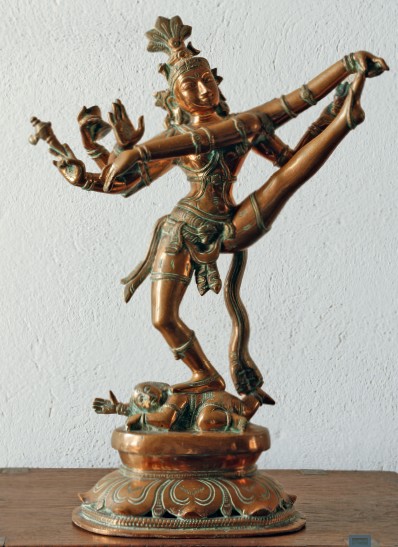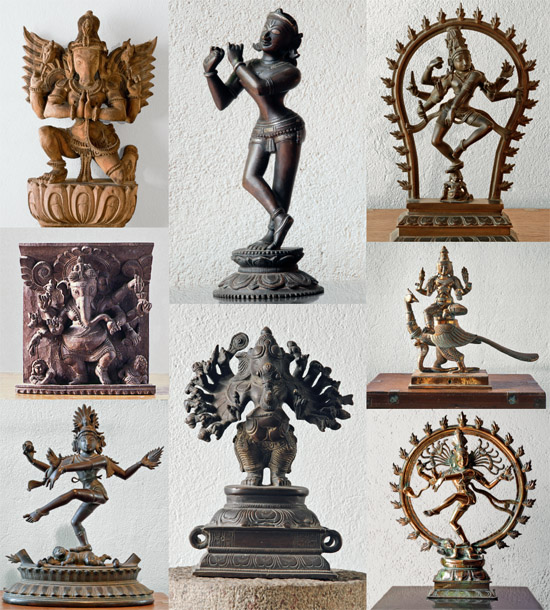Hindu Gods
Anjalendran was named after a dance in honour of Lord Siva, ‘Anjal Enra Karathalamum — The Divine Protector’, and the god occupies a special place in his collection. He now owns eight bronze Natarajas, all of them originating from South India. Nataraj, the Lord of the Dance, is the name given to Lord Siva when he is represented in a dance posture within a circle of flame.
Anjalendran also owns an army of Ganesha. Ganesh was the son of Siva and his consort Uma-Parvati and is represented as a human figure with the head of an elephant. Ganesh’s popularity has grown in recent years and the Sri Lankan countryside is dotted with small Ganesh shrines. Simple effigies of carved wood or moulded clay are widely available.
Skanda, the younger brother of Ganesh, is hailed as the remover of obstacles and the guardian of the Tamil language. In Sri Lanka he is known as Kataragama and is often depicted astride a peacock. He is revered as the god of the southern kingdom of Ruhunu and his jungle shrine has become the most important in Sri Lanka, attracting pilgrims from all religions and ethnic communities.

Seated Ganesh;

Nataraja

Hindu gods, including dancing Natarajas, elephant-faced Ganesha, Skanda riding a peacock, Krishna playing his flute and Hagriva the winged horse-man

The upper verandah of the Hameed House